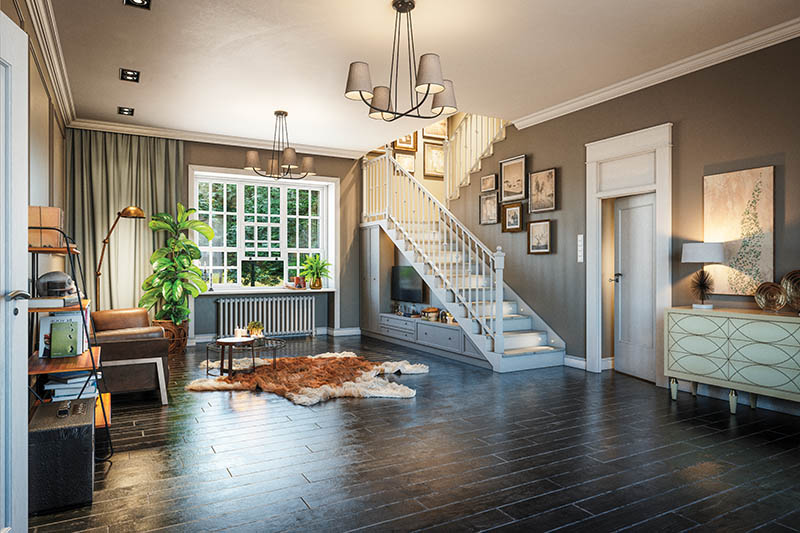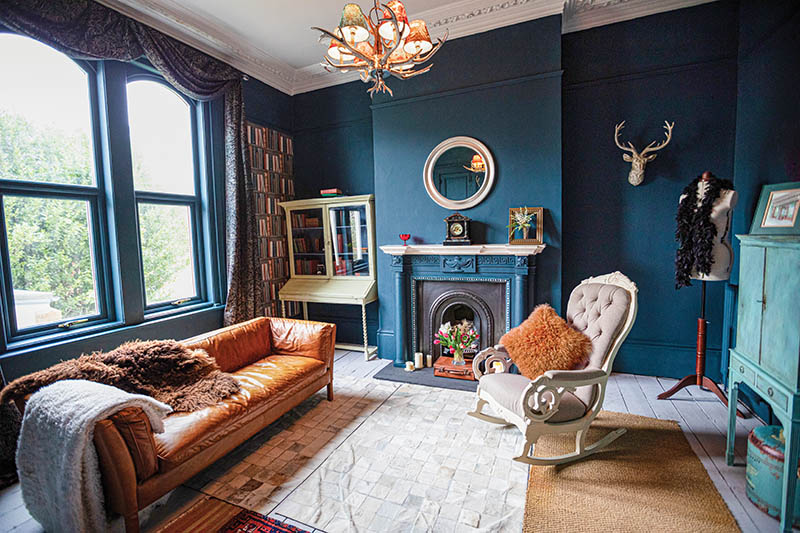Rethinking the Renovation Mindset
It’s easy to get swept up in the promise of a fresh start. The blank slate. The trendy backsplash.
The Pinterest-worthy after photo. But what if the most compelling, most personal design choice you could make wasn’t new at all?
As the renovation boom continues across the country, many homeowners are beginning to rethink the impulse to gut, replace, or cover up what’s already there. Whether it’s original tile, natural wood trim, a quirky built-in cabinet, or an antique fireplace, there’s a growing movement toward preservation—and for good reason.
Holding onto original features isn’t just about honoring the past. It’s about embracing character, sustainability, and in many cases, a better return on investment.
Before you pick up the sledgehammer, it might be worth asking: What’s worth saving?
Embracing the Charm of Imperfection
The truth is, older homes were built differently—and often more durably. Solid wood doors, hand-crafted trim, plaster walls, and detailed millwork can be difficult and expensive to replicate today. Even common elements, like mid-century tile or built-in shelving, were designed with a level of intention that mass-produced materials sometimes lack.
There’s a soul to an old house. When you walk in and see worn hardwood floors or a creaky staircase, there’s a story.
Those imperfections can be beautiful if you let them be.
Preserving original features can create a layered, lived-in feel that brings depth and authenticity to a space. It can also help your home stand out in a sea of renovations that often follow the same trends.

Digitally generated elegant Scandinavian style home interior scene.
The scene was rendered with photorealistic shaders and lighting in Autodesk® 3ds Max 2020 with V-Ray 5 with some post-production added.
From Functional to Focal Point
Rather than viewing older elements as obstacles to be updated, consider how they might become focal points instead.
Take vintage tile, for example. That powder blue bathroom tile from the 1950s might not match your usual aesthetic—but with the right supporting elements, it can become a retro-chic statement. Brass or matte black fixtures, white walls, and minimal accessories can help highlight the tile rather than fight against it.
The same goes for original fireplaces. Instead of covering up a dated mantel or painting over brick, lean into it. Restore the wood, limewash the brick, or simply keep it as-is and let it ground the room with texture and warmth.
Sometimes the best design decision is doing nothing at all. Or doing just enough to protect and showcase what’s already there.
Tips for Thoughtful Preservation
If you’re ready to rethink your renovation mindset, here are a few ways to preserve character while still meeting modern needs:
1. Restore, Don’t Replace
Refinish wood floors rather than replacing them. Strip and reseal original doors or trim. If cabinets are solid wood, consider repainting or refacing rather than tearing them out.
2. Blend Old and New
Let original features shine by surrounding them with modern, minimal design. A sleek sofa or contemporary light fixture can balance the patina of an older space.
3. Respect Scale and Proportion
Many original elements—like doorways, ceilings, or moldings—were designed with specific proportions in mind. Keep additions and updates in harmony with those original lines for a cohesive look.
4. Update Function, Not Just Style
Keep that quirky built-in, but make it useful—add lighting, repaint the interior, or use it for a modern purpose like barware or board games. You can also retrofit older cabinets with soft-close hardware or install energy-efficient inserts in old windows.
5. Salvage and Reuse
If you must remove something, consider salvaging it for another part of the house—or donating it to a local reuse center. Vintage materials are not only valuable but often higher in quality than what’s available today.
Sustainability and Storytelling
Choosing to preserve instead of replace is also a deeply sustainable choice. Demolition and new materials contribute to landfill waste and increased carbon emissions. In contrast, restoring what already exists minimizes waste and often reduces overall renovation costs.
And then there’s the emotional value. That worn banister your child slides down every morning. The original transom windows that let in just the right slant of afternoon light. These elements tell a story—your home’s and your family’s.
When you live in a space that’s not perfect but has a history, it grounds you.
You become part of something bigger than just the latest trend.

When to Let Go
Of course, not everything can or should be saved. Water damage, mold, structural issues, and hazardous materials like lead paint or asbestos may require removal for safety reasons. In some cases, preservation isn’t practical—and that’s okay.
But for everything else? It’s worth pausing before you replace.
The best homes often reflect a balance between old and new, polished and worn. They evolve slowly, lovingly. And sometimes the most meaningful design choice isn’t about what you add—but what you choose to keep.
5 Original Features Worth Saving
Before you demo, take a second look—these vintage details can add charm, value, and character to your home.
1. Hardwood Floors
Even if they’re scuffed or hiding under carpet, original wood floors are often solid and salvageable. Refinishing can restore their luster and preserve their timeless appeal.
2. Trim and Molding
Crown molding, picture rails, baseboards, and window casings add architectural depth. Solid wood trim is hard to replicate and worth keeping whenever possible.
3. Built-In Cabinets or Nooks
From hallway linen closets to breakfast benches and phone niches, built-ins offer functional storage and personality. Fresh paint or hardware can give them new life.
4. Original Doors and Hardware
Solid wood doors—especially those with panels or glass—are sturdy and stylish. Keep the vintage knobs and hinges for added character (or clean them up for a polished antique finish).
5. Fireplace Surrounds
Whether brick, stone, or tile, an original fireplace brings warmth and texture to a space. Even a non-functioning fireplace can serve as a cozy design anchor.

Drawing room with high ceilings and architectural features










